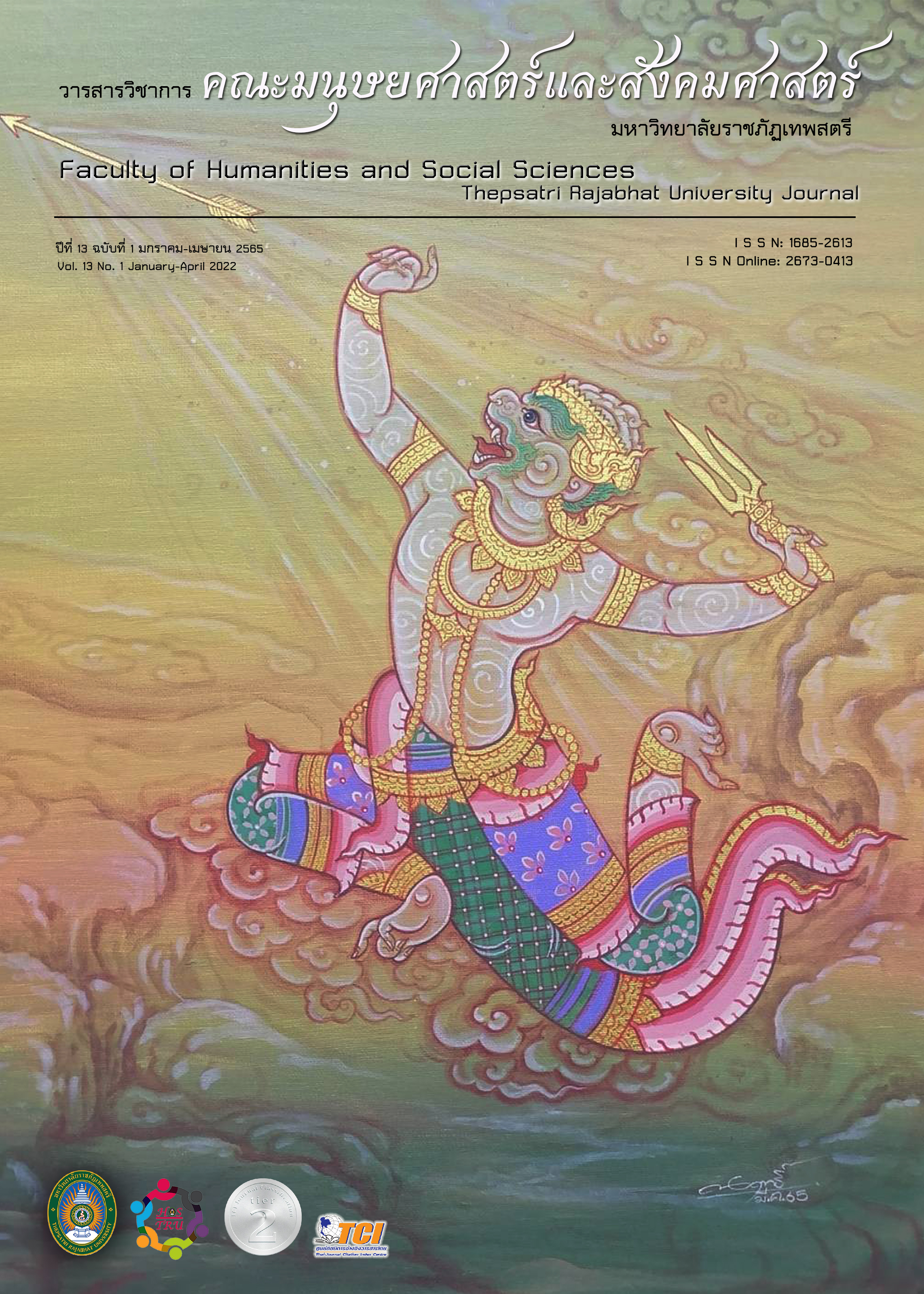The Effects of Total Physical Response and Storytelling on English Major Undergraduate Student’s Listening and Speaking Skills
Main Article Content
Abstract
The objectives of this research were to 1. study the effects of the total physical response and storytelling methods on English major undergraduate students’ listening and speaking skills and 2) examine the students’ satisfaction on the total physical response and storytelling methods. The sample consisted of 200 first to fourth year students studying in English major at the Faculty of Humanities and Social Sciences at Nakhon Sawan Rajabhat University. This quantitative study was a quasi-experimental research employing the use of 1. pre-test and post-test, 2. questionnaires, and 3. instructional plans. The data were statistically analyzed with the use of percentage, mean, and standard derivation. The results revealed that the students’ post-test scores (15.94) of listening and speaking were significantly higher than those of the pre-test scores (11.44) at the significant level of 0.05 after the implementation of total physical response and storytelling, which showed that the students had remarkable improvement in listening and speaking. In addition, the students’ satisfaction towards the two methods was at the highest level as they considered both total physical response and storytelling enjoyable and advantageous to their listening and speaking enhancement.
Downloads
Article Details

This work is licensed under a Creative Commons Attribution-NonCommercial-NoDerivatives 4.0 International License.
The content and information presented in articles published in the Academic Journal of the Faculty of Humanities and Social Sciences, Thepsatri Rajabhat University, are solely the opinions and responsibilities of the respective authors. The editorial board of the journal neither necessarily agrees with nor assumes any responsibility for such content in any manner whatsoever.
All articles, information, content, and images published in the Academic Journal of the Faculty of Humanities and Social Sciences, Thepsatri Rajabhat University, are the copyright of the journal. Any person or organization wishing to reproduce, disseminate, or otherwise utilize all or any part thereof must obtain prior permission from the Academic Journal of the Faculty of Humanities and Social Sciences, Thepsatri Rajabhat University.
References
Angwattanakul, S. (1996). Concept and Technique of English Teaching Methods 2nd Edition. Bangkok: Chulalongkorn University press.
Holleny, L. (2012). The effectiveness of Total Physical Response Storytelling for language learning with special education students. New Jersey: College of Education Rowan University.
Kwuangsawad, T. (2002). Seminar on curriculum and English teaching. Mahasarakham. Department of curriculum and teaching. Faculty of Education. Mahasarakham: Mahasarakham University.
Phuthong, L. (2016). The result of using the teaching system through the network toward learning English of students at Mae Jo University. Chiang Mai: Mae Jo University.
Riyay, P., Khamsri, T. (2012). The development of English listening - speaking skills of the 1st year students by using multimedia computer program. Report of Research. Chiang Mai: Chiang Mai University.
Rovinelli, R. J., & Hambleton, R. K. (1977). On the use of content specialists in the assessment of criterion-referenced test item validity. Tijdschrift voor Onderwijsresearch, 2(2), 49-60.
Seepoh, P. (2007). The extreme of English teaching methods. Bangkok: Aksorn Charoen Tat.
Thach O, N. (2021). English Communication Skills of Cambodian Students at Mahachulalongkornrajavidyalaya University Based on Linguistic Approach. Master’s Thesis, Mahachulalongkornrajavidyalaya University.
Thaworachak, P. (2011). The satisfaction of students at Ratchapruek College toward the teaching of teachers of Ratchapruek College. Report of Research. Bangkok: Ratchapruek College.
Warren, K. (2006). The effects of communicative language teaching strategies on student performance in foreign language class at a selected high school. Tennessee: Milligan archives.


